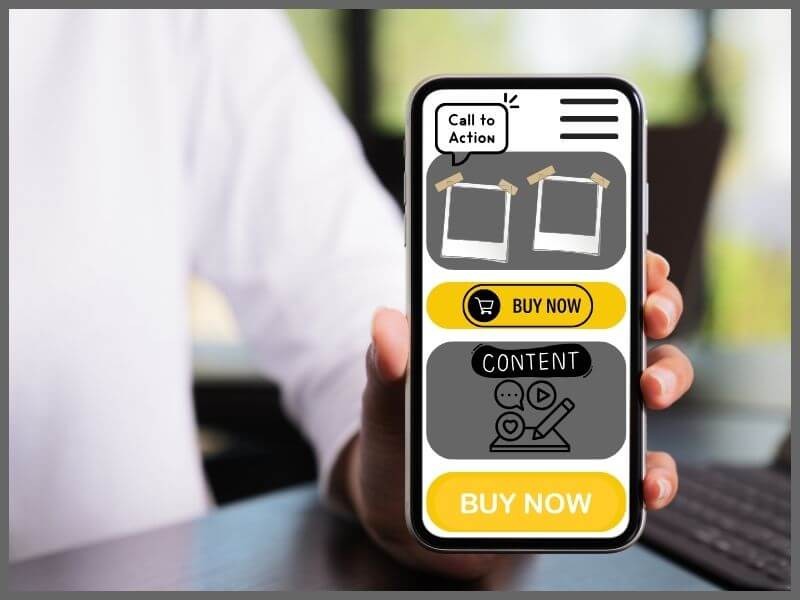
Does it seem as the whole world is on their phones? From scrolling social media to shopping for everything from shoes to sofas... If your brand isn’t making mobile a priority, you’re missing out on huge opportunities to connect with customers right where they are. With their mobile phones in their hands. Going mobile is your ticket to stronger engagement, better search rankings, and a loyal customer base. So yes, going mobile is not just a trend.
There are 17,72 billion of mobile devices in the world.
We couldn’t imagine our lives without them.
We couldn’t imagine our jobs without them.
And as even more people rely on mobile devices, marketing is shifting to prioritize mobile experiences. It’s time for you to adapt also.
With so much activity happening on smaller screens, embracing mobile first approaches will give you the much-needed edge.
For you, the “mobile first” is an opportunity to connect, engage, and enhance visibility in a way that meets modern consumer behavior.
Mobile first marketing is designing and executing marketing strategies with mobile devices as the primary platform.
Unlike traditional approaches that originated on desktops and were adapted to mobile, a mobile first strategy begins by considering mobile users first.
With more than 63% of global web traffic now coming from mobile devices, you can’t afford to overlook this shift.
In the early days of digital marketing, desktops were the default.
Campaigns, websites, and content were created for larger screens, and mobile devices weren’t regarded as relevant.
Today, that kind of approach is completely outdated.
Everyone is checking emails, scrolling though social media, and even making purchases on their smartphones. (Except for the older generation, they still believe “big” purchases are to be made on big screen or “live”, in stores).
Mobile is the first screen for many, so it's important that you prioritize design, accessibility, and functionality on smaller devices.
Mobile usage stats underscore the significance of this shift. As of recent reports, over 70 % of smartphone users have made purchases online using their mobile devices. The prognosis is this number will just be increasing, and that almost 90% of ecommerce sales will be done like this.
Google has implemented mobile first indexing, meaning it predominantly uses the mobile version of content for indexing and ranking.
This information makes it clear that you have to turn towards mobile users to stay relevant. Why?
People today don’t have time, and have a very short attention span.
They expect convenience, speed, and personalisation - all enhanced in a mobile friendly experience.
People want quick load times, smooth navigation, and easy access to information.
Mobile first marketing addresses these expectations directly, keeping users engaged and reducing bounce rates.
Companies that invest themselves and their resources in mobile first strategies often see improvements in engagement, user experience, and loyalty.

With mobile first strategy you have a chance to connect with people on the go.
Mobile devices are always within our reach, and your brand has a chance to connect with users at any moment.
Push notifications, location-based services, and mobile friendly messaging create an “always on” connection.
People don’t have to wait for information – they want updates, deals, and reminders as they move, increasing your chances of interaction and conversion.
Your task here is to give personalised, engaging experiences for mobile users - content that feels unique to each user, such as:
Mobile first strategies often include loyalty programs, gamification, and notifications that make users feel connected to the brand.
For instance, a fitness app might use location data to offer weather-specific workout tips, while a retail app could notify users of discounts at nearby stores.
Starbucks, has a mobile rewards app that lets customers earn points, order ahead, and receive exclusive offers – all of which keep customers coming back.
Mobile first design isn’t just a nice-to-have; it’s also essential for SEO.
Google’s mobile first indexing means if you prioritise mobile optimisation - you can enjoy better visibility.
How mobile first indexing works?
Google predominantly uses the mobile version of websites for indexing for couple of years now.
If your mobile site isn’t up to par, your search ranking will suffer.
Mobile first indexing takes into account mobile page speed, usability, and content relevance. Simply said - you have to optimise your mobile site to rank well.
Your mobile site needs to load quickly, respond well to user input, and be easy to navigate. Speed is particularly important, as Google’s Core Web Vitals heavily weigh page load times in mobile rankings.
Make sure buttons, images, and text are formatted for mobile screens to create for the ultimate experience.
Mobile-optimised sites tend to have lower bounce rates, higher engagement, and better dwell time – all factors Google takes into account for rankings.
For you, this means that by focusing on mobile first, you're also enhancing your search engine visibility and making it easier for new customers to find you.

Creating content that’s mobile-friendly is more than a “nice” design; it’s all about crafting content that fits the mobile experience.
Write clear, impactful content for mobile readers.
Mobile users are often skimming, so it’s essential to be clear.
Use short sentences, bullet points, and concise paragraphs.
Break down complex ideas and put the most important information at the top.
This way, even on a quick scroll, users grasp your main points.
For visual engagement – use images, videos, and CTAs effectively.
Visuals matter on mobile – but they must be optimised.
Use compressed images and short videos that load quickly without compromising quality.
Call To Actions should be bold and clear, positioned where they’re easy to tap.
Keep navigation simple.
A single-column layout, headers, and easy-to-tap buttons make it easy for users to move through your site.
Avoid drop-down menus or any elements that could slow the user down.
Use a straightforward mobile layout that lets users browse, filter, and book/buy/order with minimal taps.
Optimising for mobile SEO involves more than usual tactics you are used to - it requires a mobile-specific approach.
To optimise speed and have faster loading times compress your images, leverage browser caching, and use accelerated mobile pages (AMP) to boost loading times.
Even a one-second delay in mobile load time can impact conversion rates.
Use Google’s PageSpeed Insights as it offers offer suggestions on speeding up mobile pages and TinyPNG to compress images.
You must optimise for voice search, the latest mobile search trend.
Focus on natural language keywords and answer-based content that fits how users speak rather than type.
Voice searches are often longer and more conversational, like “Where’s the nearest coffee shop?”
It’s obligatory to boost rankings for your location.
Mobile users frequently search for local information.
Use local SEO tactics like creating a Google My Business, adding location-based keywords, and including customer reviews.
Restaurants, shops, and service-based businesses are the ones who benefit the most from this.

As mobile tech keeps evolving, we’re seeing new trends transform how brands connect with their audiences.
If you put your focus on mobile, you are set for better engagement, higher search rankings, and a more loyal customer base.
With mobile use rising fast, shifting to a mobile first strategy is no longer optional—it’s essential for your future success.
Contact us today if success is what you have in mind.